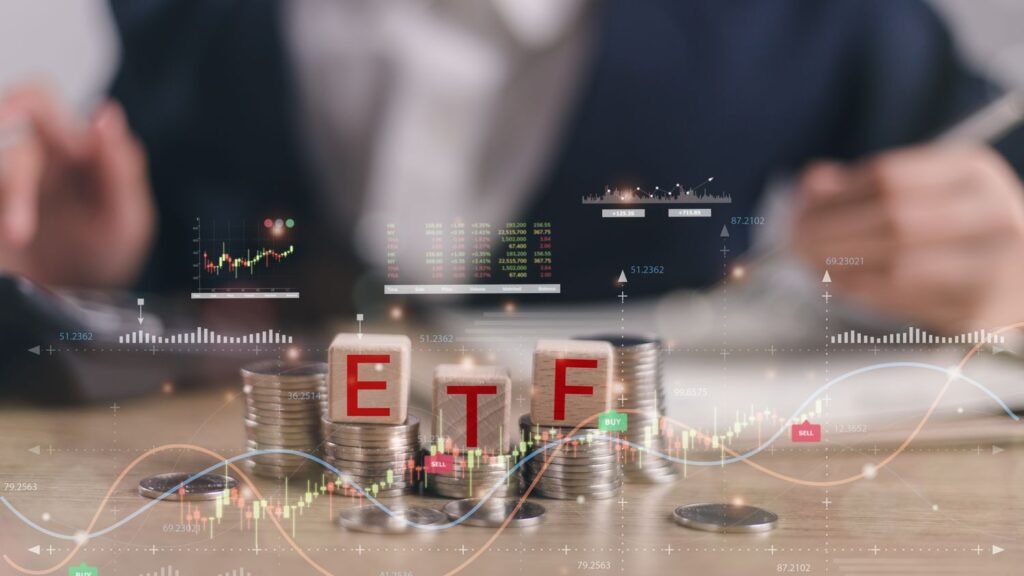:max_bytes(150000):strip_icc():format(jpeg)/GettyImages-1916167895-a71e8a137eb347f4bfc3e17c46881077.jpg)
With over 4,000 of them on the U.S. market and almost $16 trillion in assets, exchange-traded funds (ETFs) are a staple for investors seeking diversification and low fees. Yet a staggering 81% of ETFs fail to meet the $1 billion threshold that signals long-term viability, according to May 2025 Morningstar data, and many are what analysts call “money traps”—expensive, illiquid, or overly complex funds that drain investor returns rather than build wealth.
The good news is that the ETFs that make the most gains for you share certain identifiable traits that we’ll show you how to spot below.
Key Takeaways
- The best ETFs have lower costs, the easiest ability to buy and sell your shares, transparent holdings, and a clear fit within your investment goals.
- Historical data show that broad-market, low-cost ETFs like Vanguard Total Stock Market Index Fund ETF (VTI) and Invesco QQQ ETF (QQQ) have delivered stronger long-term returns, while niche or exotic ETFs often disappoint.
Why Many ETFs Are Considered Money Traps
High Fees and Poor Performance
Morningstar and other analysts have warned that many ETFs fail to justify their fees, especially when compared with broad market index funds. Many ETFs charge higher expense ratios or have hidden costs that erode returns over time. For example, while some ETFs like Vanguard S&P 500 ETF (VOO) charge as little as 0.03%, others can charge 10 or 20 times as much without delivering better performance.
Liquidity Issues
Thinly traded ETFs can have wide bid-ask spreads, making it expensive to enter or exit positions. Low liquidity (ability to buy or sell shares) also increases the risk that you won’t be able to sell at a fair price, especially during market stress.
Complexity and Lack of Transparency
Many ETFs track obscure or highly specialized indices, making it hard for investors to understand what they actually own. Some sector or thematic ETFs may appear diversified but are heavily concentrated in a few stocks or industries, increasing risk.
Market Distortion and Overcrowding
The popularity of ETFs has led to concerns about market distortion, as large inflows can push up the prices of certain stocks simply because they’re included in major indices. This can inflate valuations and reduce the benefits of diversification.
Not all ETFs are tax-efficient. Some distribute capital gains to shareholders, which creates unexpected tax liabilities and reduces after-tax returns.
How To Identify Reliable, Profitable ETFs
Focus on Core, Low-Cost Funds
The most successful ETFs tend to be those that track broad, well-established indices with low fees. Below, as of July 3, 2025, are the share price, fees, and returns for SPY, VTI, and QQQ:
Check Liquidity and Trading Volume
Look for ETFs with high average daily trading volumes and tight bid-ask spreads. This ensures you can buy and sell without incurring unnecessary costs
Understand What You Own
Go beyond the ETF’s name. Review the underlying holdings, sector exposures, and the index it tracks. Make sure the ETF fits your investment goals and doesn’t duplicate or over-concentrate your portfolio
Monitor Expense Ratios
Lower fees mean less drag on your returns. Compare the expense ratios of similar ETFs and favor those with a long history of keeping costs low.
Evaluate the Issuer’s Reputation
Stick with established providers known for transparency and sound management. While no fund is risk-free, reputable issuers are less likely to engage in practices that could endanger your investment.
Tip
“One of the most significant headwinds to profitable investing is management fees,” David Tenerelli, a certified financial planner at Values Added Financial Planning, told Investopedia. “Holding a passive, index-based investment approach, an investor can keep fees low while diversifying the portfolio across industries, sectors, and geographies.”
The Bottom Line
Most ETFs don’t live up to the hype—many are expensive, illiquid, or overly complex, making them money traps. To avoid these pitfalls, focus on ETFs that are low-cost, highly liquid, and track broad, well-known indices. Always do your homework: check the fund’s holdings, expense ratio, and fit within your portfolio. If you stick to proven, reputable ETFs, you can harness the benefits of this investment vehicle while sidestepping the traps that catch so many investors.

